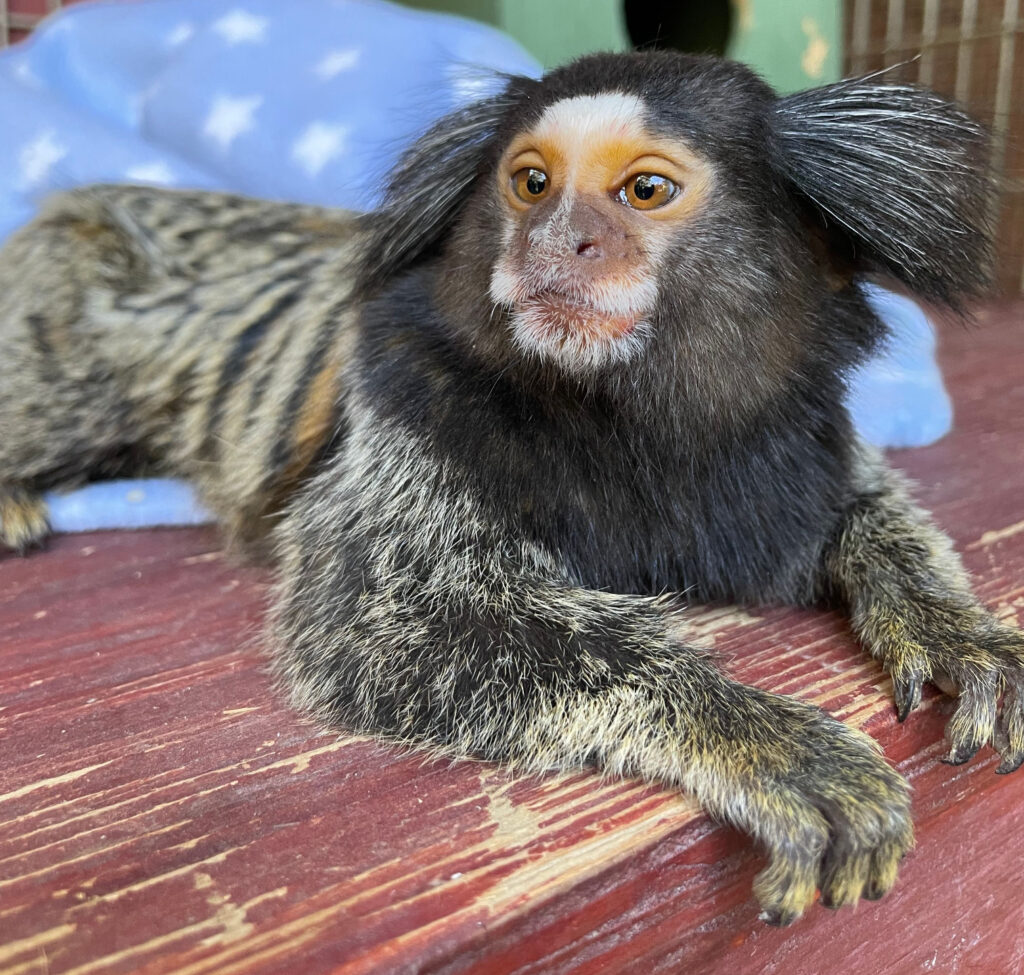Common Marmoset Monkey, The common marmoset monkey (Callithrix jacchus) is one of the most captivating and unique primates in the animal kingdom. Native to the northeastern forests of Brazil, this small New World monkey has become increasingly popular among animal enthusiasts and researchers alike due to its distinctive appearance, social behavior, and adaptability.
Physical Characteristics
The common marmoset monkey is easily recognizable by its small size, typically weighing around 300 to 500 grams, and its striking physical features. One of its most notable traits is the white tufts of fur on either side of its head, which contrast sharply with its dark face. Its long tail, which is often banded, is used primarily for balance rather than grasping. Unlike some other primates, the common marmoset does not have prehensile tails.
Natural Habitat and Behavior
In the wild, common marmosets inhabit the tropical and subtropical forests of Brazil. They are arboreal creatures, meaning they spend most of their lives in trees. These monkeys are diurnal, active during the day, and sleep at night. They live in small, tight-knit family groups that usually include a dominant breeding pair and their offspring. This social structure is vital for their survival, as group members work together to care for the young and protect their territory.
Diet
The diet of the common marmoset monkey is varied and includes fruits, insects, small vertebrates, and most notably, tree sap and gum. Their specialized teeth allow them to gnaw into tree bark to access this sap, a behavior known as “gummivory.” This unique feeding strategy distinguishes them from many other primate species.
Reproduction
Reproduction in common marmosets is particularly interesting. Females typically give birth to twins, although single births and triplets can occur. All members of the group, including older siblings, help in raising the young, which strengthens family bonds and ensures higher survival rates for the infants.
Use in Research
The common marmoset monkey has also become a valuable model in biomedical research. Due to their genetic similarities to humans, small size, and relatively fast reproduction rate, they are often used in studies related to neuroscience, aging, and infectious diseases. However, their use in research has sparked ethical discussions about the treatment and welfare of non-human primates in scientific settings.
Conservation Status
While the common marmoset monkey is not currently considered endangered, habitat destruction and the illegal pet trade pose significant threats to its wild populations. Efforts to preserve their natural habitats and enforce wildlife protection laws are crucial to ensuring their continued survival.
Conclusion
The common marmoset monkey is an extraordinary primate species with unique adaptations, a rich social life, and significant contributions to scientific research. As we learn more about these intriguing animals, it becomes increasingly important to balance our curiosity and scientific interests with a strong commitment to conservation and ethical responsibility.
You Might Also Like These:
how much is a finger monkey pet


